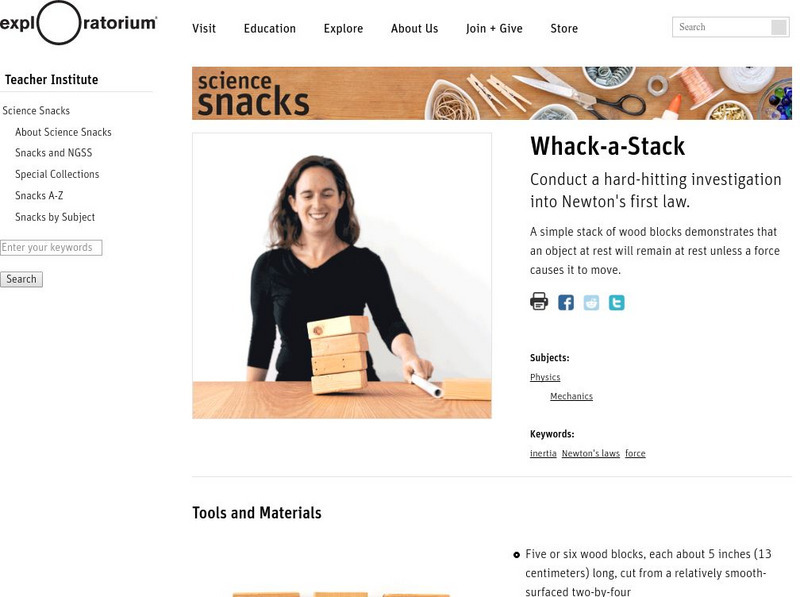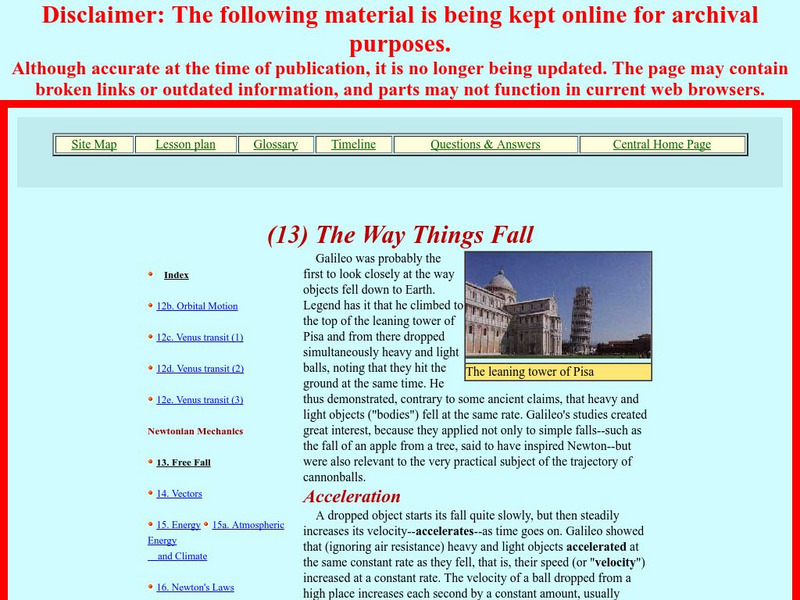Hi, what do you want to do?
Science Bob Pflugfelder
Science Bob: The Lincoln High Dive
Instructions for a science demonstration of Newton's first law of motion using common supplies. Learn how to turn the demonstration into an experiment.
Exploratorium
Exploratorium: Science Snacks: Whack a Stack
Investigate Newton's first law of motion using just a set of wood blocks.
Exploratorium
Exploratorium: Gyroscope
Description of a museum exhibit in which the forces exerted by two gyroscope wheels are analyzed. Excellent demonstration idea.
Exploratorium
Exploratorium: Bicycle Wheel Gyro
Description of a museum exhibit in which the spinning bicycle wheel induces the rotation of a student in a rotating chair. Excellent demonstration idea.
Other
Wikibooks: Physics Study Guide
A handy resource that gives an overview of equations and definitions pertinent to an introductory, college-level physics course, with two of its three sections focusing on motion-related topics and principles.
Other
Easy Science for Kids: All About Force: Pushing and Pulling
Students will understand that pushes and pulls can have different strengths and directions. Students investigate the effects of these different pushes and pulls.
NASA
Nasa: Beginner's Guide to Aerodynamics
This site from NASA discusses application of Newton's first law of motion to airplane motion. Includes a graphic and an accompanying explanation.
NASA
Nasa: The Way Things Fall
This site from NASA compares free falling motion to falling with air resistance. Discusses Galileo's experiment. Explains why we believe all objects free fall with the same acceleration.
Physics Classroom
The Physics Classroom: Circular and Satellite Motion: Centripetal Force
Through illustrated examples and practice problems, students explore the centripetal force requirement. So for an object moving in a circle, there must be an inward force acting upon it in order to cause its inward acceleration.









